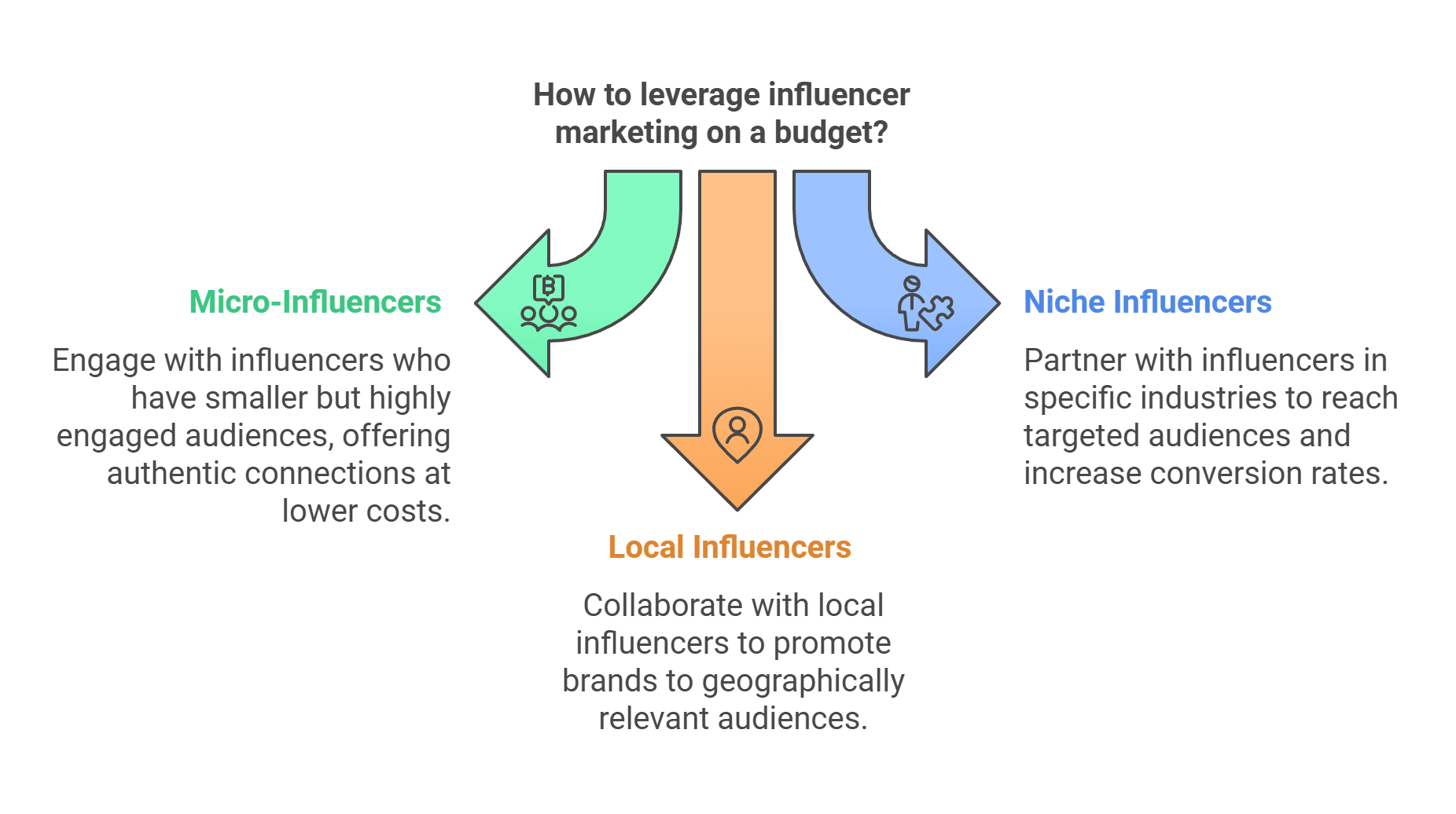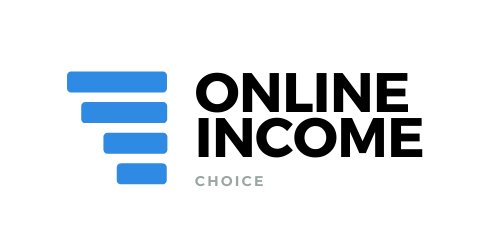Creative Strategies For Influencer Marketing On A Shoestring Budget
SETH GODIN | MARKETING EXPERT & AUTHOR
Allows businesses to bridge the gap...
Influencer marketing allows businesses to bridge the gap between their brand and consumers, building trust in ways traditional advertising cannot.
Did you know that 74% of businesses with limited budgets can run successful influencer marketing campaigns? This surprising statistic shows the power of this type of marketing. It's a cost-effective way for brands to reach more people without spending much.
In today's digital world, influencer marketing stands out as a powerful way for businesses to connect directly with their target audience, leveraging trusted voices to amplify brand authenticity and engagement. They have smaller but more engaged followings.
Additionally, nano-influencers, with 1,000 to 10,000 followers, can offer even higher engagement rates and are highly cost-effective for brands with tighter budgets. They often have closer relationships with their fans, leading to more trust and interaction. This strategy can save time, money, and effort while still offering great ROI if done right.
For small businesses, influencer marketing is a great way to promote without the need for expensive marketing agencies. In this article, we'll dive into how to use influencer marketing on a tight budget. We'll cover micro-influencer strategies, building real partnerships, and getting the most out of your investment.
Key Takeaways:
- Influencer marketing is accessible for businesses with limited budgets.
- Micro-influencers offer higher engagement rates and trust.
- Building relationships with influencers requires consistent engagement.
- Focus on engagement rather than reach for successful campaigns.
- Leverage user-generated content to increase trust and engagement.
- Track results to evaluate campaign success and optimize strategies.
Want to listen? This content is available on Spotify
Ready to start?
Understanding Micro-Influencer Strategy For Budget-Conscious Brands
Micro-influencer partnerships are changing the game for brands on a budget. These creators have 1,000 to 100,000 followers, making up 47.3% of all influencers.
According to a study by Influencer Marketing Hub, this group represents the largest segment of influencers and offers unmatched engagement opportunities for brands on a budget. They offer authentic content and engagement at a lower cost than big influencers.
What Are Micro-Influencers And Why They Matter
Micro-influencers have a small but engaged following. They focus on specific niches, making them great for targeted partnerships. With 91% of the influencer market, they're a cost-effective choice for social media promotion.
Benefits Of Working With Smaller Content Creators
Working with micro-influencers has many benefits for brands on a budget. 44% of marketers find them affordable, with lower fees than big influencers. This lets brands work with many influencers, scaling their campaigns well.
Engagement Rates vs Follower Count
For budget-friendly influencer marketing, engagement is key, not just follower count. Micro-influencers have a 6% engagement rate on Instagram, much higher than mega-influencers' 1.97%. This means more real connections and better conversion rates for brands.
Platform | Average Price Range |
|---|---|
| $100–$500 per post | |
| YouTube | $200–$1,000 per video |
| TikTok | $25–$125 per video |
| $20–$100 per Tweet | |
| $250–$1,250 per post |
By using micro-influencer strategies, brands can make big impacts without spending a lot. The trick is finding the right mix of reach, engagement, and budget for the best ROI in influencer marketing.
How To Do Influencer Marketing On A Small Budget
Influencer Marketing: Building Authentic Partnerships
Creating real partnerships is key to influencer marketing success. Brands that match influencers' values and lifestyles make better campaigns. This builds trust and credibility with the influencer's followers.
Finding The Right Influencers For Your Brand
Use tools like BuzzSumo, AspireIQ, and Heepsy to find influencers who match your audience. Discover smart affiliate marketing tools.
Social media platforms like Instagram and TikTok also offer search features and hashtags to identify potential collaborators. This approach leads to more engaging partnerships. Micro-influencers, with their engaged followers, are great for small businesses.
Creating Value-Based Collaborations
Make content that fits both your brand and the influencer's values. This creates real, engaging content that works well. People want to see real connections in influencer partnerships.
Newsletter Sign Up
Discover The Path To Passive Income Success
Take the first step towards a lucrative future - sign up for exclusive insights and resources!
Developing Long-Term Relationships
Invest in lasting influencer partnerships. These give valuable feedback on your audience's likes and dislikes. Brands are 75% more trusted when influenced by someone who knows them.
Communication And Outreach Strategies
Use clear communication for effective influencer outreach. Be open about what you want from the campaign. Remember, rules are getting stricter on influencer disclosures for honesty.
| Metric | Impact |
| Brand Trust | 75% increase with authentic connections |
| Campaign Views | 35+ million (Hilton on TikTok) |
| Community Feedback | 85% positive (TIAA partnership) |
| Ticket Sales | 1,000+ (Essence Festival collaboration) |
Track your influencer campaign success with important metrics. Look at engagement, website visits, and sales. These help you improve your influencer strategies for the future.

Cost-Effective Compensation Models
Influencer marketing can be done without spending a lot if you manage your budget well. Brands can use different ways to pay influencers to get the most value for their money. Let's look at some good methods for paying based on performance and using affiliate marketing.
Popular Compensation Models
- Pay-per-post: Influencers get paid for each post they make. This method is simple and easy to handle.
- Product/Service Compensation: Giving away products or services can be a smart move for brands with limited budgets.
- Performance-Based Models: Influencers get paid based on the results of their posts, like views or clicks.
- Affiliate Marketing: Influencers earn commissions for each sale they generate, tracked via promo codes or links.
- Tiered Structure: Combines upfront fees with performance rewards.
| Compensation Model | Key Benefit | Best For |
| Pay-per-post | Simplicity | Short-term campaigns |
| Product/Service Compensation | Cost-effective | Brands with limited cash |
| Performance-based | Results-driven | ROI-focused campaigns |
| Affiliate Marketing | Scalability | E-commerce brands |
| Tiered Structure | Balanced approach | Long-term partnerships |
Maximizing ROI Through Content Strategy
Leveraging User-Generated Content
User-generated content (UGC) is a great tool for budget-friendly influencer marketing. It builds trust and authenticity, as 7 in 10 consumers trust influencers, friends, and family over brand info. Encourage influencers to start UGC campaigns to create an engaged community and boost social media engagement. Explore content marketing for online success.
Cross-Platform Content Optimization
To maximize your influencer partnerships, optimize content across many platforms. This strategy increases your campaign's reach and helps boost ROI. Remember, 80% of consumers are more likely to buy from brands that partner with influencers beyond social media.
Performance Tracking And Analytics
Tracking your campaign's performance is key for effective influencer marketing. Focus on metrics like conversion rates, follower growth, website traffic, and engagement rates to measure success accurately. Check out online marketing analytics for better decisions.
Tools like Google Analytics, Hootsuite, and Sprout Social can help measure engagement and conversions, while platforms like HubSpot or BuzzSumo provide detailed ROI insights. Use analytics tools to measure engagement and optimize future campaigns.







Formula For ROI:
(Total Revenue – Total Costs) / Total Costs) x 100 = ROI
Collect data on engagement, conversions, sales revenue, and campaign costs to accurately measure ROI.
Brand Collaboration Opportunities
Collaborating with complementary brands can expand your reach and share resources. For example, a local coffee shop partnered with a nearby bakery to co-promote their products on Instagram.
By featuring each other's items in their posts and stories, both brands attracted new customers and boosted their online engagement. Learn strategies for successful affiliate marketing. For example, AboutYou, a fashion retailer, credits a large portion of its revenue to influencer collaborations, showing a significant social media influence ROI.
| Metric | Impact |
| Consumer Trust in Influencers | 30% increased trust in 6 months |
| Purchase Frequency from Influencer Posts | 49% buy at least once a month |
| Consumer Preference for Multi-Channel Campaigns | 80% more likely to buy |
The Bottom Line
Influencer marketing has changed the game in digital marketing. It's a great way to get your brand noticed without spending a lot. It works well in many fields, like fashion and food, by tapping into the trust influencers have with their followers.
A study by Influencer Marketing Hub in 2024 showed that 92% of marketers believe influencer marketing is an effective strategy, particularly for improving brand awareness and engagement. Also, 86% are ready to set aside money for these campaigns.
For those with limited budgets, micro-influencers are a great choice. They have high engagement rates, helping brands reach the right people without spending too much. By genuinely working with influencers, even small businesses can make a big impact.
The secret to success is picking the right influencers, knowing what you want to achieve, and keeping track of how well it's working. Influencer marketing is about more than just getting seen. It's about connecting with people and making your brand stronger. With the right plan and execution, influencer marketing can help your brand grow and get noticed online.
Glossary Of Key Terms
FAQ
It's about working with micro-influencers to promote your products or services without spending a lot. This way, small businesses can use social media to their advantage without breaking the bank.
Look for them on social networks and search for keywords. Make a list of potential partners. Check their content and audience to see if they match your brand. Choose influencers with high engagement rates over those with lots of followers. Look at their content quality and reach in your market.
Offer free products or exclusive experiences instead of just money. For product-based businesses, sending free samples works well. Use commission-based models to save money and motivate results.
Use user-generated content to boost engagement and trust. Encourage influencers to create UGC campaigns. Use analytics to track your campaigns' success. Collaborate with other brands to reach more people and share costs. Always check your results to see what's working and what's not.
Micro-influencers offer high engagement rates and authentic connections. They often have closer relationships with their followers, leading to more trust and conversions for your brand.
Start by engaging with their content and joining conversations. Be respectful and professional when reaching out. Highlight shared interests and potential collaborations. Focus on creating partnerships that benefit both your brand and the influencer. This builds trust and loyalty over time.
Personalize your outreach by showing you know their content and audience. Clearly explain why working with your brand is valuable. Be professional and concise. Use influencer discovery tools to find and connect with potential partners more easily.
Engagement rate is more important than follower count for small businesses. It shows an active and interested audience. Focus on influencers with engaged followers, not just a lot of followers.
Use analytics tools to track engagement metrics like likes and shares. Use unique links or promo codes to track direct conversions. Regularly review these metrics to improve your campaigns.
Find influencers who share your brand values and target audience. Offer value beyond money, like exclusive experiences. Give them creative freedom to keep content authentic. Build relationships slowly and focus on long-term collaborations. This leads to more meaningful and cost-effective partnerships.
